Caryn’s Thoughts
 There are lots of people who enjoy people watching. It’s a source of entertainment for them. Many of us are that way, myself included, but it is not a pastime I ever associated with animals. Maybe I should have, but somehow, the idea never crossed my mind. Oh sure, we know that our pets watch us for clues about what is going to happen, such as is it time to go for a walk, or a ride in the car, or if they jump on our laps, will we pet them. That is not really people watching, but rather owner watching. There are other animals who like to watch people, however.
There are lots of people who enjoy people watching. It’s a source of entertainment for them. Many of us are that way, myself included, but it is not a pastime I ever associated with animals. Maybe I should have, but somehow, the idea never crossed my mind. Oh sure, we know that our pets watch us for clues about what is going to happen, such as is it time to go for a walk, or a ride in the car, or if they jump on our laps, will we pet them. That is not really people watching, but rather owner watching. There are other animals who like to watch people, however.
Yesterday, I read an article about the Lake Superior Zoo, in Duluth, Minnesota. That one caught my eye, because I was born in Superior, Wisconsin…just over the bridge from Duluth, but as I looked around the internet, I saw that the same situation  is going on in many zoos. The animals miss the people who come to the zoo. I really never gave any thought to the idea of the zoo animals watching the people who are watching them, but the do. They are interested in the goings on of humans!! Shocking, but it’s true. I guess that it is more than just the humans who are adversely affected by the quarantines and shut-downs.
is going on in many zoos. The animals miss the people who come to the zoo. I really never gave any thought to the idea of the zoo animals watching the people who are watching them, but the do. They are interested in the goings on of humans!! Shocking, but it’s true. I guess that it is more than just the humans who are adversely affected by the quarantines and shut-downs.
The zoo keepers are finding themselves being the entertainment for the animals, and it’s not just for something different to do, it’s necessary. Like people, the animals need mental stimulation to stay healthy. Many beings, especially those in zoos, have been locked up during this time. We have talked about the elderly people in nursing homes, or even in their own homes, who can’t have visitors, and how very lonely they have become. Sadly, the animals in the zoos feel the very same way, and until the shutdowns cease, there is little that can be  done about it. The job of a zookeeper is an essential one, and it’s a good thing, or these animals would see no one. One of the zookeepers at the Lake Superior Zoo, Lizzy Larson said, “You guys as visitors are the main sources of entertainment for the animals at the zoo. As much as we like watching the animals through the glass or behind a fence, they also love watching us. We walk by, we do things. It’s really exciting for them to see us.” That is a strange thought for me, but I guess it makes sense. It makes me feel sad for them, because while we at least know the reasons for the closures, they don’t, they just know that no one is coming to see them.
done about it. The job of a zookeeper is an essential one, and it’s a good thing, or these animals would see no one. One of the zookeepers at the Lake Superior Zoo, Lizzy Larson said, “You guys as visitors are the main sources of entertainment for the animals at the zoo. As much as we like watching the animals through the glass or behind a fence, they also love watching us. We walk by, we do things. It’s really exciting for them to see us.” That is a strange thought for me, but I guess it makes sense. It makes me feel sad for them, because while we at least know the reasons for the closures, they don’t, they just know that no one is coming to see them.

 When my nephew, Allen Beach was a little boy living in Washington state while his dad was in the Navy and out on a seven month cruise, my sisters, Cheryl Masterson, Alena Stevens and her daughter, Lacey, Allyn Hadlock, and I went to visit our sister, Caryl Reed, who is Allen’s mom. That put Allen being the only boy in a crowd of women. For a boy of 3½ years, I’m sure that was overwhelming. All those bosses. Nevertheless, I think Allen had a good time.
When my nephew, Allen Beach was a little boy living in Washington state while his dad was in the Navy and out on a seven month cruise, my sisters, Cheryl Masterson, Alena Stevens and her daughter, Lacey, Allyn Hadlock, and I went to visit our sister, Caryl Reed, who is Allen’s mom. That put Allen being the only boy in a crowd of women. For a boy of 3½ years, I’m sure that was overwhelming. All those bosses. Nevertheless, I think Allen had a good time.
I was thinking as Allen’s birthday approached, that no one had any idea where his life would take him. It’s not surprising that Allen followed in his dad’s footsteps, joining the Navy after graduating from high school, but truly, from there on out, it was unexpected. He had wanted to be train as a member of a flight crew for the navy, but small fracture of his foot caused him to have to give up that dream. While that was disappointing, Allen chose to go into the medical field, as a corpsman. The Navy can’t wait for six weeks to complete the training. That isn’t a totally unexpected  thought either, because his mom, my sister, Caryl was a respiratory therapist. So, Allen trained to be a corpsman, and ended up serving in some pretty cool positions. He was a corpsman in Bethesda, Maryland at Walter Reed National Military Medical Center, as part of the medical detail to the President of the United States, and then he was stationed in Japan, where he met his sweet future wife, Gaby, who was also a corpsman, and is now a nurse. On a wonderful trip to Bali, Allen proposed to Gaby, and when she accepted, he knew his life was complete.
thought either, because his mom, my sister, Caryl was a respiratory therapist. So, Allen trained to be a corpsman, and ended up serving in some pretty cool positions. He was a corpsman in Bethesda, Maryland at Walter Reed National Military Medical Center, as part of the medical detail to the President of the United States, and then he was stationed in Japan, where he met his sweet future wife, Gaby, who was also a corpsman, and is now a nurse. On a wonderful trip to Bali, Allen proposed to Gaby, and when she accepted, he knew his life was complete.
Allen and Gaby returned to Walter Reed Military Medical Center to finish their time in the Navy, and then began their college educations. Gaby still had time left in the Navy, so Allen started first, and after finishing his studies and obtaining his degree in Hospital Administration, they decided to move to Casper, Wyoming where Allen has family, so Gaby could start college in the nursing program. Allen was hired by Wyoming Medical Center as the department manager over the Referral and Communications Departments. Later he also became department  manager over the EMS Department. Who would have ever guessed that the little 3½ year old boy running around his parents home in Washington State would have gone on to do the great things he has. It just goes to show that you never know what a child might choose to become, and sometimes their life experiences can play a part in shaping their future, even if it is having a fractured foot. Sometimes, the things we thought we wanted, turn out not to be the best for our future…while another path becomes by far the best move. Today is Allen’s birthday. Happy birthday Allen!! Have a great day!! We love you!!
manager over the EMS Department. Who would have ever guessed that the little 3½ year old boy running around his parents home in Washington State would have gone on to do the great things he has. It just goes to show that you never know what a child might choose to become, and sometimes their life experiences can play a part in shaping their future, even if it is having a fractured foot. Sometimes, the things we thought we wanted, turn out not to be the best for our future…while another path becomes by far the best move. Today is Allen’s birthday. Happy birthday Allen!! Have a great day!! We love you!!
 The new year is always a little bittersweet for my family…at least since my mother, Collene Spencer passed away on February 22, 2015. Mom’s birthday was the party event of the year, because her birthday was on January 1st. That’s the party event of the year for most people, but even more so for us. We celebrated the end of the old year, Mom’s birthday always made our New Year’s Eve party the best of all of them. You couldn’t have paid us to go to some other party. Even the ball dropping at Times Square, couldn’t compare for us. We were already at the best party event. I miss those parties. Oh, we still celebrate, but one guest is missing…Mom. The parties just aren’t the same without the part about welcoming the new year and then telling Mom happy birthday. Now, we can only give her our birthday wishes from Earth to Heaven.
The new year is always a little bittersweet for my family…at least since my mother, Collene Spencer passed away on February 22, 2015. Mom’s birthday was the party event of the year, because her birthday was on January 1st. That’s the party event of the year for most people, but even more so for us. We celebrated the end of the old year, Mom’s birthday always made our New Year’s Eve party the best of all of them. You couldn’t have paid us to go to some other party. Even the ball dropping at Times Square, couldn’t compare for us. We were already at the best party event. I miss those parties. Oh, we still celebrate, but one guest is missing…Mom. The parties just aren’t the same without the part about welcoming the new year and then telling Mom happy birthday. Now, we can only give her our birthday wishes from Earth to Heaven.
Mom was a special kind of person. She was a child of God, who wanted everyone to know her Savior, Jesus Christ. She told people about the Lord, even when my sisters and I thought she should give up on the person. Mom couldn’t stand the idea of anyone going to Hell. She had such a pure heart that way. When I think about all the people she talked to over the years, and the fact that if even half of them got saved…well, Mom helped bring a whole lot of people to the Lord. Looking back on all the times I was embarrassed by her “mission” work, it makes me feel ashamed. She was doing what she knew to be right, and I was a kid who knew nothing. She took the high road in it. I wish I had.
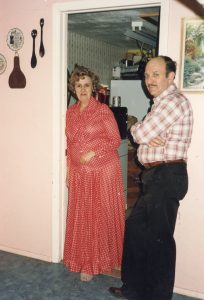 Mom was a character to say the least. She would do the funniest things and make the funniest faces, just to make us laugh. Especially if we, her five daughters, Cheryl Masterson, me (Caryn Schulenberg), Caryl Reed, Alena Stevens, and Allyn Hadlock, were fighting. Of course, we didn’t all fight at the same time, but rather two or three at a time. Just imagine having five daughters who were either fighting or playing loudly. We must have driven Mom crazy at times. Still, she loved being a Mom, and had visions of the perfect children, like all moms do…until they have kids anyway. Then the reality hits. Kids are kids, and they make noise and they fight. Mom loved to creatively stop the noise…even if that meant making funny faces. She also loved to sing us a song. Her favorite, “You Are My Sunshine” was a staple in our house. She was the sunshine in our house, and we always knew that we were her sunshine. Today would have been my mom’s 85th birthday. Happy birthday in Heaven, Mom. We love and miss you very much.
Mom was a character to say the least. She would do the funniest things and make the funniest faces, just to make us laugh. Especially if we, her five daughters, Cheryl Masterson, me (Caryn Schulenberg), Caryl Reed, Alena Stevens, and Allyn Hadlock, were fighting. Of course, we didn’t all fight at the same time, but rather two or three at a time. Just imagine having five daughters who were either fighting or playing loudly. We must have driven Mom crazy at times. Still, she loved being a Mom, and had visions of the perfect children, like all moms do…until they have kids anyway. Then the reality hits. Kids are kids, and they make noise and they fight. Mom loved to creatively stop the noise…even if that meant making funny faces. She also loved to sing us a song. Her favorite, “You Are My Sunshine” was a staple in our house. She was the sunshine in our house, and we always knew that we were her sunshine. Today would have been my mom’s 85th birthday. Happy birthday in Heaven, Mom. We love and miss you very much.
 As the final day of 2020 arrives, I find myself…relieved. This has been a hard year in so many ways…so many losses. Setting aside the loss of friends and loved ones, because that is almost too much to go into, I will turn my attention instead to the Covid-19 Pandemic, the source of much of the loss we all felt this year. Countless numbers of people lost their jobs this year, or at least temporarily lost their source of income. We became isolated, even if we weren’t sick, we were told to wear masks, and even when things opened up partially, the churches were told to stay closed, while the abortion clinics were considered essential businesses. We were told to shelter in place, making us feel isolated and alone. We couldn’t visit loved ones in nursing homes or hospitals, making them feel alone and forgotten. We were told to skip the holidays and stay at home, further isolating all of us. Urgently needed surgeries and cancer treatments were postponed, because of the virus, but people could still kill the unborn babies. Don’t get me wrong, I do understand the seriousness of the virus, I lost loved ones and friends too, but the way things were handled, especially in Democratically run cities and states, did nothing to protect the
As the final day of 2020 arrives, I find myself…relieved. This has been a hard year in so many ways…so many losses. Setting aside the loss of friends and loved ones, because that is almost too much to go into, I will turn my attention instead to the Covid-19 Pandemic, the source of much of the loss we all felt this year. Countless numbers of people lost their jobs this year, or at least temporarily lost their source of income. We became isolated, even if we weren’t sick, we were told to wear masks, and even when things opened up partially, the churches were told to stay closed, while the abortion clinics were considered essential businesses. We were told to shelter in place, making us feel isolated and alone. We couldn’t visit loved ones in nursing homes or hospitals, making them feel alone and forgotten. We were told to skip the holidays and stay at home, further isolating all of us. Urgently needed surgeries and cancer treatments were postponed, because of the virus, but people could still kill the unborn babies. Don’t get me wrong, I do understand the seriousness of the virus, I lost loved ones and friends too, but the way things were handled, especially in Democratically run cities and states, did nothing to protect the  people of this country. We tried to listen to the scientists, but they kept contradicting themselves and each other. One minute masks saved lives, the next they didn’t. I hate to be a person who only rants, but like most of us, I’m over it…and I’m over 2020.
people of this country. We tried to listen to the scientists, but they kept contradicting themselves and each other. One minute masks saved lives, the next they didn’t. I hate to be a person who only rants, but like most of us, I’m over it…and I’m over 2020.
With all that has gone on in 2020, I am still able to say that I have high hopes for 2021. The craziness and sadness of 2020 will not last forever, because people have a strong tendency to have hope for the future. Pandemics have come and gone, and this one will too. As a nation, we will fight for our freedoms. We have done it before, and we are not scared to do it again. I believe we have God on our side, and in Him, we have the victory in every battle…especially this one. Whether people want the vaccine or not, it gives many people hope that there is an end to this Pandemic. I think that is the main thing that people are looking for these days…hope!!
 As we close out 2020, we can consider it hindsight as we look forward to 202Won!! I really like that, because this nation, as well as many others, need a win right now, and I’m all for putting 2020 in the rearview mirror, and turning the mirror toward the ceiling so we don’t have to look at it ever again. We will persevere, and we will come back stronger, if we don’t lose hope and our strong faith in God!! I am a positive person, but I think 2020 was enough to try anyone’s patience and even faith, but we must never lose faith. Never doubt in the dark, what God told you in the light. And don’t ley what you see make you doubt what God has spoken. So, here’s to the end of 2020. Bring on 202Won!!! Happy New Year everyone.
As we close out 2020, we can consider it hindsight as we look forward to 202Won!! I really like that, because this nation, as well as many others, need a win right now, and I’m all for putting 2020 in the rearview mirror, and turning the mirror toward the ceiling so we don’t have to look at it ever again. We will persevere, and we will come back stronger, if we don’t lose hope and our strong faith in God!! I am a positive person, but I think 2020 was enough to try anyone’s patience and even faith, but we must never lose faith. Never doubt in the dark, what God told you in the light. And don’t ley what you see make you doubt what God has spoken. So, here’s to the end of 2020. Bring on 202Won!!! Happy New Year everyone.
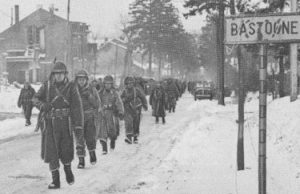
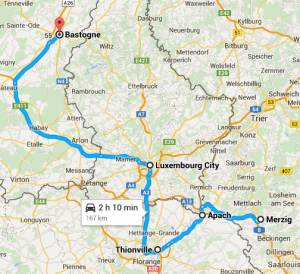 The Battle of the Bulge has been a brutal, hard-fought battle. The soldiers were tired, cold, and hungry; and all they wanted was a night off to recharge. That was not to be. They had more pressing matters to attend to, and the fate of the free world might just depend on their success. The Germans had achieved a total surprise attack on the Belgian town of Bastogne, on the morning of December 16, 1944, due to a combination of Allied overconfidence, preoccupation with Allied offensive plans, and poor aerial reconnaissance because to bad weather. The American forces, specifically the US 101st Airborne Division bore the brunt of the attack and incurred their highest casualties of any operation during the war. The town was vital to the Germans, because it would open up a valuable pathway further north for German expansion. The siege had to be stopped, and the 101st Airborne Division needed help to do it.
The Battle of the Bulge has been a brutal, hard-fought battle. The soldiers were tired, cold, and hungry; and all they wanted was a night off to recharge. That was not to be. They had more pressing matters to attend to, and the fate of the free world might just depend on their success. The Germans had achieved a total surprise attack on the Belgian town of Bastogne, on the morning of December 16, 1944, due to a combination of Allied overconfidence, preoccupation with Allied offensive plans, and poor aerial reconnaissance because to bad weather. The American forces, specifically the US 101st Airborne Division bore the brunt of the attack and incurred their highest casualties of any operation during the war. The town was vital to the Germans, because it would open up a valuable pathway further north for German expansion. The siege had to be stopped, and the 101st Airborne Division needed help to do it.
The capture of Bastogne was the ultimate goal of the Battle of the Bulge…the German offensive through the Ardennes forest. Bastogne provided a road junction in rough terrain where few roads existed. The Belgian town was defended by the US 101st Airborne Division, which had to be reinforced by troops who straggled in from other battlefields. Food, medical supplies, and other resources eroded as bad weather and relentless German assaults threatened the Americans’ ability to hold out. Nevertheless, Brigadier General Anthony C MacAuliffe met a German surrender demand with a typewritten response of a single word, “Nuts.”
This was as bad as it gets, and they needed a hero. Enter “Old Blood and Guts” Patton. General George S Patton Jr was a “street fighter” of a general. He knew what it took to win, and he refused to lose. He was the kind of leader any army, and indeed any government needed. Patton made the decision, the only possible decision he could make. The plan was a “complex and quick-witted strategy wherein he literally wheeled his 3rd Army a sharp 90° turn in a counterthrust movement.” It sounds like a simple plan, but there is no more risk-laden battlefield maneuver than a 90° turn and then a move across and perpendicular to their own lines of communication. The possibilities of mistakes being make were endless. Still, Patton told his men that lives depended on them, and they needed to be in Bastogne…100 miles away, in five days. Not only that, but the march would be over a mountain pass in frigid temperatures. It seemed an impossible 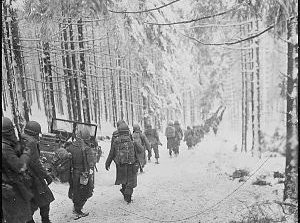
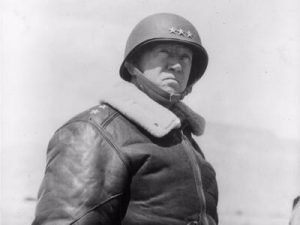 task, but two days later, Patton broke through the German lines and entered Bastogne, relieving the valiant defenders and ultimately pushing the Germans east across the Rhine. I think that if this mission had been asked of any other general, the results might not have been so great. There are generals in war who may annoy everyone around them, but when it comes to doing what is best for the people in trouble, you don’t want anyone else to do the job.
task, but two days later, Patton broke through the German lines and entered Bastogne, relieving the valiant defenders and ultimately pushing the Germans east across the Rhine. I think that if this mission had been asked of any other general, the results might not have been so great. There are generals in war who may annoy everyone around them, but when it comes to doing what is best for the people in trouble, you don’t want anyone else to do the job.

 Humans think, for some reason, that we are the only ones who find ways to “charm” a perspective mate into going out with us. Well, we need to get a grip on ourselves, because capturing the attention of the opposite sex is kind of universal. In the animal kingdom, it is the male who works to entice the female, and not the opposite, as it is in the human world. In the human world the woman wears the makeup and fancy clothes.
Humans think, for some reason, that we are the only ones who find ways to “charm” a perspective mate into going out with us. Well, we need to get a grip on ourselves, because capturing the attention of the opposite sex is kind of universal. In the animal kingdom, it is the male who works to entice the female, and not the opposite, as it is in the human world. In the human world the woman wears the makeup and fancy clothes.
I have never really been a scholar of the animal kingdom, but the other day, something caught my eye. Imagine trying to win your mate by enticing her with the prettiest picture you can make…and you only have a week to make it. This is a very big project, and you will need to work 24 hours a day, taking only a few moments break periodically. That part sounds crazy, but you see, if he doesn’t keep working 24/7, the current will destroy his masterpiece. Yes I said current. And after he is finished with his masterpiece, he has earned the right in my opinion to get all puffed up about his work of art.
In case you think I’m crazy, I am talking about the Japanese Puffer Fish. Oddly, this mathematically-minded fish has the ability to make amazing and very artistic circles…for lack of a better name for his version of art. This amazing little fish makes it’s masterpieces using only it’s fins as tools for his art. The fish uses the decorative items, like seashells and stones, he finds on the sea floor to decorate the edges of his masterpiece. The Japanese Puffer Fish is the only instance of a fish or an animal making something so intricate to attract a mate, but then maybe that is out of necessity too. The Japanese Puffer Fish is really rather plane looking, and in fact might be able to look invisible on the sea floor. Of course, when it puffs up, it’s color comes out. Many fish in the sea are beautiful colors, but not this little guy. So, he has to find a different way to attract his girl. 
 Well, lets just say, that looks aren’t everything. The Japanese Puffer Fish works very hard to make something absolutely beautiful for his mate, and that is much more important than being the most beautiful fish in the sea. Maybe when they said, “There are other fish in the sea,” they were thinking about the Japanese Puffer Fish. I think this little guy might just be the best choice in the long run…for a female Japanese Puffer Fish anyway.
Well, lets just say, that looks aren’t everything. The Japanese Puffer Fish works very hard to make something absolutely beautiful for his mate, and that is much more important than being the most beautiful fish in the sea. Maybe when they said, “There are other fish in the sea,” they were thinking about the Japanese Puffer Fish. I think this little guy might just be the best choice in the long run…for a female Japanese Puffer Fish anyway.
 I finally finished my Christmas shopping!! I’m very excited about it. I suppose that would sound funny to most people, especially when you consider that today is December 28th. In case you are wondering, no I’m not finished with next year’s Christmas shopping. That would be a miracle, indeed. Actually, I was doing ok with my shopping, I had everything purchased and shipped to my daughter, Amy’s family in Washington state, with the exception of stocking stuffers. Then, it happened. Covid had made its way through our family, my sisters (except Alena Stevens and her family), brothers-in-law, and a number of cousins. Bob and I had it over Thanksgiving, which was also cancelled this year…at least for us. I thought maybe we would make it through Christmas Covid-free, but then my daughter, Corrie and her husband, Kevin caught it, and their quarantine would take us through Christmas. This just wasn’t our year for holidays.
I finally finished my Christmas shopping!! I’m very excited about it. I suppose that would sound funny to most people, especially when you consider that today is December 28th. In case you are wondering, no I’m not finished with next year’s Christmas shopping. That would be a miracle, indeed. Actually, I was doing ok with my shopping, I had everything purchased and shipped to my daughter, Amy’s family in Washington state, with the exception of stocking stuffers. Then, it happened. Covid had made its way through our family, my sisters (except Alena Stevens and her family), brothers-in-law, and a number of cousins. Bob and I had it over Thanksgiving, which was also cancelled this year…at least for us. I thought maybe we would make it through Christmas Covid-free, but then my daughter, Corrie and her husband, Kevin caught it, and their quarantine would take us through Christmas. This just wasn’t our year for holidays.
That said, the urgency to finish my Christmas shopping left me, because we decided  to postpone our celebration until we could all be together for it. Celebrating, when part of us we’re stuck at home or in the hospital was just not the same, and it would be especially sad for Corrie and Kevin. It doesn’t feel like a celebration when part of the family is not there. When the day comes, it will be worth the wait. It will be a real celebration, because we will all be well. So we wait, because Corrie and Kevin being with us is more important than what day we celebrate this year.
to postpone our celebration until we could all be together for it. Celebrating, when part of us we’re stuck at home or in the hospital was just not the same, and it would be especially sad for Corrie and Kevin. It doesn’t feel like a celebration when part of the family is not there. When the day comes, it will be worth the wait. It will be a real celebration, because we will all be well. So we wait, because Corrie and Kevin being with us is more important than what day we celebrate this year.
I suppose that means I could still have plenty of time for shopping, but who knows. The thing about Covid is that some people take a while to get over it and others are over it in two weeks. The day when we could finally have Christmas could creep up on me and then my shopping wouldn’t be done. Not good!! So, I decided to get it finished. And another good thing is that I actually have all the gifts wrapped Wow!! Now, whenever Christmas comes this year, I’ll be ready.
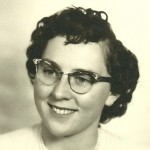 My husband’s aunt, Esther Hein really likes flowers. She loves gardening and watching her creation bloom. That is a talent that I just don’t have, but Esther does have it…and many others. She is an artist, and has painted great landscapes, which is my favorite, and on a round saw blade, which is very cool. Esther also enjoys making quilts and sewing other things. She made a set of curtains for my mother-in-law, Joann Schulenberg, and while she had Alzheimer’s Disease, and didn’t remember many things, she always remembered that Esther made those curtains for her. I always loved that my mother-in-law kept Esther in her heart. I even remember the time that I was helping her get ready for bed, and she didn’t want to go. Suddenly, out of the blue, she said to me, “Don’t Esther!!” Of course, it had a funny connotation for me too, because my mother-in-law often tried to get out of going to bed so early, but I had to work the next day, so she had to go to bed before the 10:00pm news. The funny thing was that for once I wasn’t the one getting in trouble for making her go to bed. She blamed Esther that day.
My husband’s aunt, Esther Hein really likes flowers. She loves gardening and watching her creation bloom. That is a talent that I just don’t have, but Esther does have it…and many others. She is an artist, and has painted great landscapes, which is my favorite, and on a round saw blade, which is very cool. Esther also enjoys making quilts and sewing other things. She made a set of curtains for my mother-in-law, Joann Schulenberg, and while she had Alzheimer’s Disease, and didn’t remember many things, she always remembered that Esther made those curtains for her. I always loved that my mother-in-law kept Esther in her heart. I even remember the time that I was helping her get ready for bed, and she didn’t want to go. Suddenly, out of the blue, she said to me, “Don’t Esther!!” Of course, it had a funny connotation for me too, because my mother-in-law often tried to get out of going to bed so early, but I had to work the next day, so she had to go to bed before the 10:00pm news. The funny thing was that for once I wasn’t the one getting in trouble for making her go to bed. She blamed Esther that day.
I’m sure that over the years Esther has had to carry some heavy burdens. She raised three children mostly as a single mom, and did a great job of it. They are all responsible members of society and great people. Esther has taught them the way they should go. She has been active in her church and she loves the Lord. She loves the outdoors and camping, but I’m not sure she has been able to do that very much in the last few years. She  loves animals and people. She loves helping people, and in fact, lately she has been helping by delivering food boxes to needy people. There are always needy people these days, from job losses, to home losses, to fire losses, people have needs, and Esther is our there helping to fill those needs. Even though her area of the country, Oregon has been inundated with wildfires this year, just like California, and the smoke was heavy at times, but Esther’s daughter Vina Frye assured me that Esther was safe, and so was she. In fact, it was Vina who told me that Esther was delivering the food boxes. Vina is so proud of her mom and her giving heart…and so am I. Today is Esther’s 80th birthday. Imagine that 80 years old, and she is still helping other people. Happy birthday Esther!! Have a great day!! We love you!!
loves animals and people. She loves helping people, and in fact, lately she has been helping by delivering food boxes to needy people. There are always needy people these days, from job losses, to home losses, to fire losses, people have needs, and Esther is our there helping to fill those needs. Even though her area of the country, Oregon has been inundated with wildfires this year, just like California, and the smoke was heavy at times, but Esther’s daughter Vina Frye assured me that Esther was safe, and so was she. In fact, it was Vina who told me that Esther was delivering the food boxes. Vina is so proud of her mom and her giving heart…and so am I. Today is Esther’s 80th birthday. Imagine that 80 years old, and she is still helping other people. Happy birthday Esther!! Have a great day!! We love you!!
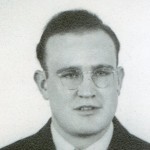
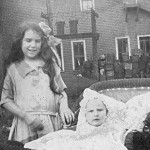 Yesterday, we received the news that our sweet Uncle Bill Spencer had passed away from Covid at the Middle River Health and Rehabilitation Center in South Range, Wisconsin. He was a little under one month from his 99th birthday. Uncle Bill had lived at the Middle River Center for about ten years now, and we have had the opportunity to visit him there twice. I wish it had been more, but we live a long way away from them, so it wasn’t to be. The center was a nice place, and the people there loved Uncle Bill. We could see that the people there had a heart for their residents, and that gave us peace of mind. Uncle Bill tested positive for Covid on December 14th, and was doing ok until the morning of December 25th. By that afternoon, he had gone home to Heaven.
Yesterday, we received the news that our sweet Uncle Bill Spencer had passed away from Covid at the Middle River Health and Rehabilitation Center in South Range, Wisconsin. He was a little under one month from his 99th birthday. Uncle Bill had lived at the Middle River Center for about ten years now, and we have had the opportunity to visit him there twice. I wish it had been more, but we live a long way away from them, so it wasn’t to be. The center was a nice place, and the people there loved Uncle Bill. We could see that the people there had a heart for their residents, and that gave us peace of mind. Uncle Bill tested positive for Covid on December 14th, and was doing ok until the morning of December 25th. By that afternoon, he had gone home to Heaven.
Uncle Bill was the last of my dad’s generation in their parents’ line, and lived the longest of them all. He was the second child of my grandparents, Allen and Anna (Schumacher) Spencer, born in Tomahawk, Wisconsin on January 21, 1922, when his older sister, Laura (Spencer) Fredrick was 10 years old, born August 3, 1912. We don’t know why there was such a distance between the two older children, because the younger three were pretty close together. My dad, Allen Spencer followed on April 27, 1924, and Aunt Ruth (Spencer) Wolfe on November 9, 1925. As they grew, the brothers, William and Allen were good friends as well as siblings. The fact that both were boys gave them many interests in common.
I recall some of their stories told when Uncle Bill came out for a visit in 2006. One of my favorites was about 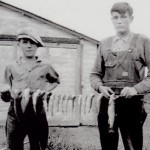
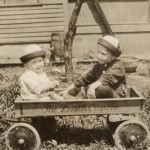 Independence Day celebrations. Growing up on a farm in the Holyoke area of Minnesota, they boys worked to plow, and remove rocks and tree stumps from the fields. This made them experts with dynamite, a fact that we hadn’t heard before. That in itself is very interesting, but they were also kids, and…well mischievous to say the least. Their July 4th tradition was to set off a dynamite blast…at daybreak. When I asked if people got mad at them, they said that they were out in the country, so who cared. Indeed!! One time though, they decided to try something new. Their mom had gone into town, leaving the boys at home. Their curious minds kicked in. They decided to find out what would happen if they set off a stick of dynamite on the top of the gate post. Yikes!! Well, they found out what would happen. When the dynamite exploded, the gate post sunk several inches into the dirt. The gate would no longer close, of course, and he boys immediately set about fixing it before their mom came back from town. They had no desire to find out what she thought of their prank.
Independence Day celebrations. Growing up on a farm in the Holyoke area of Minnesota, they boys worked to plow, and remove rocks and tree stumps from the fields. This made them experts with dynamite, a fact that we hadn’t heard before. That in itself is very interesting, but they were also kids, and…well mischievous to say the least. Their July 4th tradition was to set off a dynamite blast…at daybreak. When I asked if people got mad at them, they said that they were out in the country, so who cared. Indeed!! One time though, they decided to try something new. Their mom had gone into town, leaving the boys at home. Their curious minds kicked in. They decided to find out what would happen if they set off a stick of dynamite on the top of the gate post. Yikes!! Well, they found out what would happen. When the dynamite exploded, the gate post sunk several inches into the dirt. The gate would no longer close, of course, and he boys immediately set about fixing it before their mom came back from town. They had no desire to find out what she thought of their prank.
While it makes me so sad that my uncle is gone now, I can feel his excitement as he entered Heaven to find his parents and siblings waiting for him. And what a wonderful thought…he was home for Christmas this year. I would imagine the celebration was wonderful. The boys were back together after so many years. I can picture them…just like kids again, filled with excitement, but I can also imagine one other thing. I can hear God saying, “The boys are back together…hide the dynamite!!” God knows his children well, and it simply wouldn’t do for 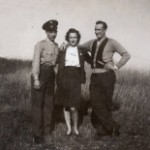
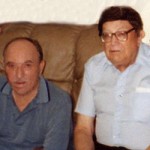 those mischievous Spencer brothers to set off a stick of dynamite, right there on the gate post of the Pearly Gates, and sink one side several inches into the ground!! Nevertheless, I can see their minds clicking, sharp as ever now, thinking…”Hey, lets give that a try!!” Dynamite or not, there is a party going on in Heaven today. Grandma and Grandpa Spencer, and their kids are all together in Heaven again, and that’s worth celebrating. Uncle Bill we all love you very much and we will miss you always. You are in our future now, and we can’t wait to see you again.
those mischievous Spencer brothers to set off a stick of dynamite, right there on the gate post of the Pearly Gates, and sink one side several inches into the ground!! Nevertheless, I can see their minds clicking, sharp as ever now, thinking…”Hey, lets give that a try!!” Dynamite or not, there is a party going on in Heaven today. Grandma and Grandpa Spencer, and their kids are all together in Heaven again, and that’s worth celebrating. Uncle Bill we all love you very much and we will miss you always. You are in our future now, and we can’t wait to see you again.

 Most of the time, Christmas is a time filled with tradition. Many families celebrate it in exactly the same way every year. Of course, the most important thing about Christmas is the celebration of the birth of Jesus. When I think of where this world would be if Jesus had never come down from Heaven to save us from our own sins, I feel such thankfulness. We needed Him, and He came. No one really knows what day Jesus was born, but in reality, that part doesn’t really matter, but rather the fact that he was born.
Most of the time, Christmas is a time filled with tradition. Many families celebrate it in exactly the same way every year. Of course, the most important thing about Christmas is the celebration of the birth of Jesus. When I think of where this world would be if Jesus had never come down from Heaven to save us from our own sins, I feel such thankfulness. We needed Him, and He came. No one really knows what day Jesus was born, but in reality, that part doesn’t really matter, but rather the fact that he was born.
This Christmas, for many people has been different than any other Christmas we have had before. Most us us weren’t alive in 1918 when the Spanish Flu Pandemic brought quarantine to many places in the world. I don’t know if things were as locked down as they are this year, but those who were ill, could not be with other people, and so their families were separated, as many are now. It makes for a Christmas that doesn’t feel like Christmas. Still, we have to remember the reason for the season, and not the things we have lost. John 3:16 says, “For God so loved the world, that he gave his only begotten Son, that whosoever believeth in him should not perish, but have everlasting life.” Without Jesus, we were doomed. With Him we have victory and everlasting life. What a wonderful reason to celebrate His birthday. He is the Savior of the World, and His way is so easy for us to follow.
Like it or not, this Christmas brings us to the beginning of the last week of a horrible year, and one the likes of which many of us hope never to go through again. January of 2020 found us facing the beginning of the pandemic, and by March we were in quarantine, and the economy was shut down. The year got steadily worse until many of us found ourselves 
 weary, and ready to start a new year. For my family, that has not changed. We are really ready for 2021. Even today was a sad day, but I will tell of that story tomorrow. I believe the new year will be much better, and as bad as 2020 has been, I am very optimistic for the new year, not for any political or human reason, but because I believe that God is good to us and because he sent His son to die for us, He will not leave us without hope. Therefore I will have hope for 2021. Merry Christmas to all!!
weary, and ready to start a new year. For my family, that has not changed. We are really ready for 2021. Even today was a sad day, but I will tell of that story tomorrow. I believe the new year will be much better, and as bad as 2020 has been, I am very optimistic for the new year, not for any political or human reason, but because I believe that God is good to us and because he sent His son to die for us, He will not leave us without hope. Therefore I will have hope for 2021. Merry Christmas to all!!

